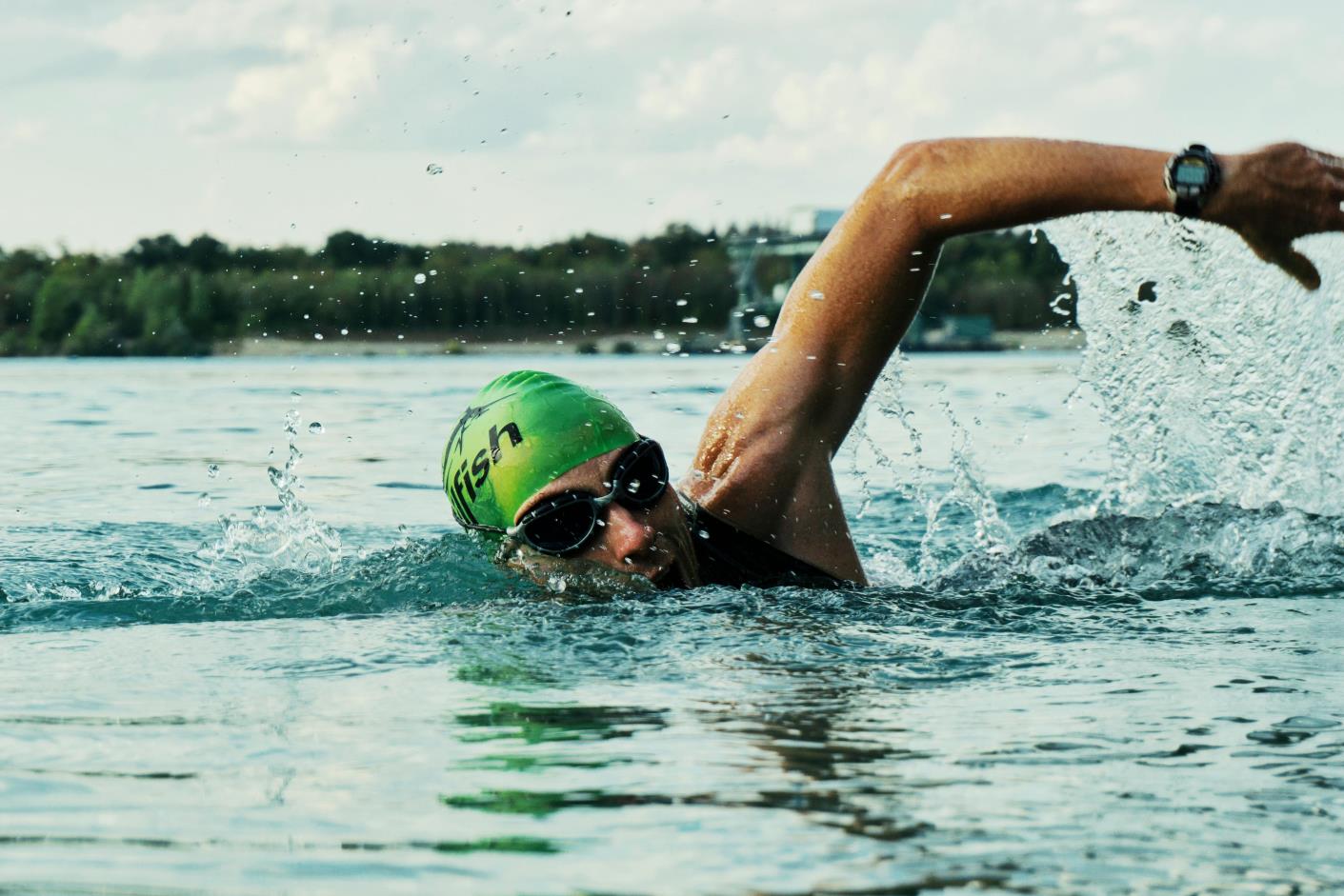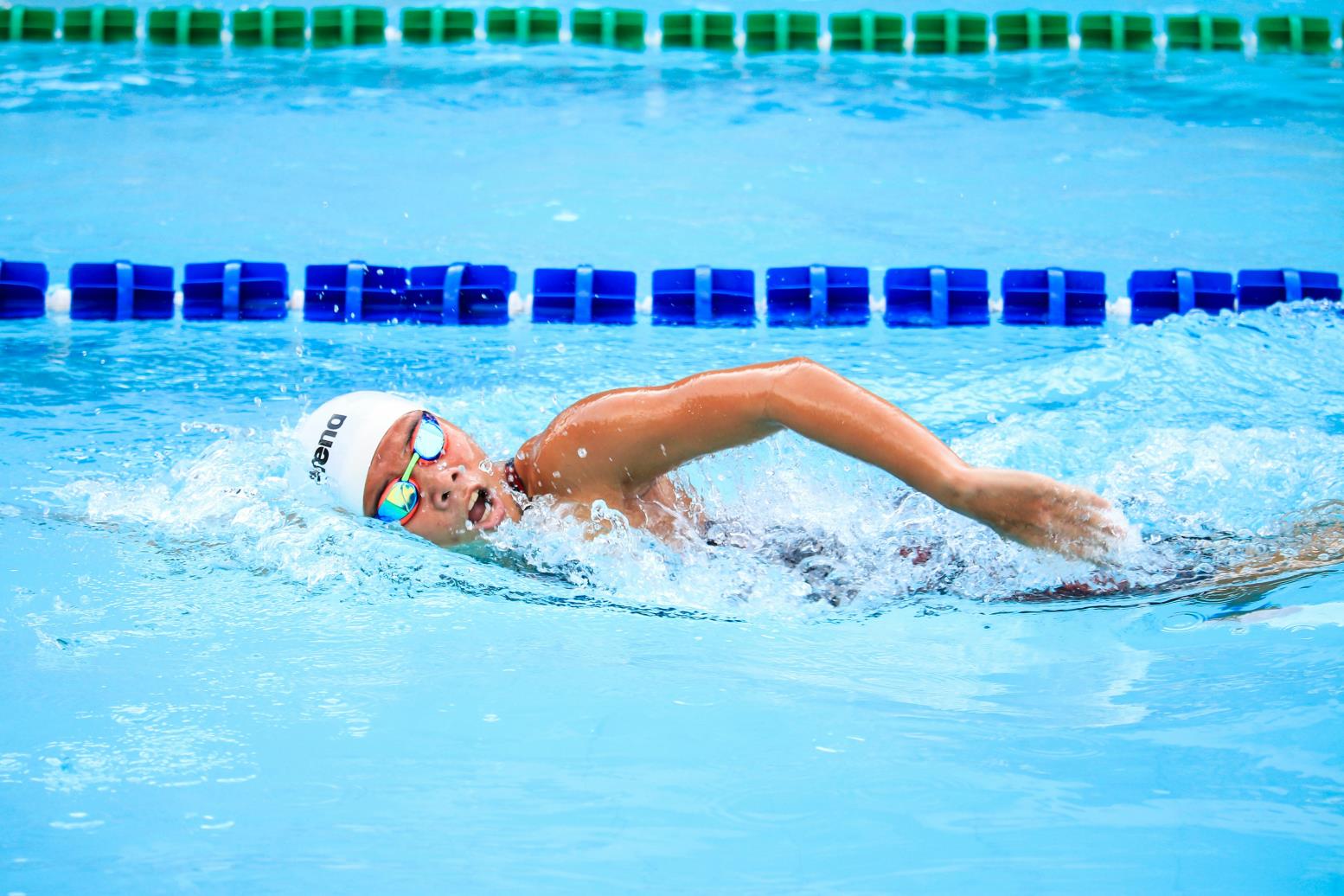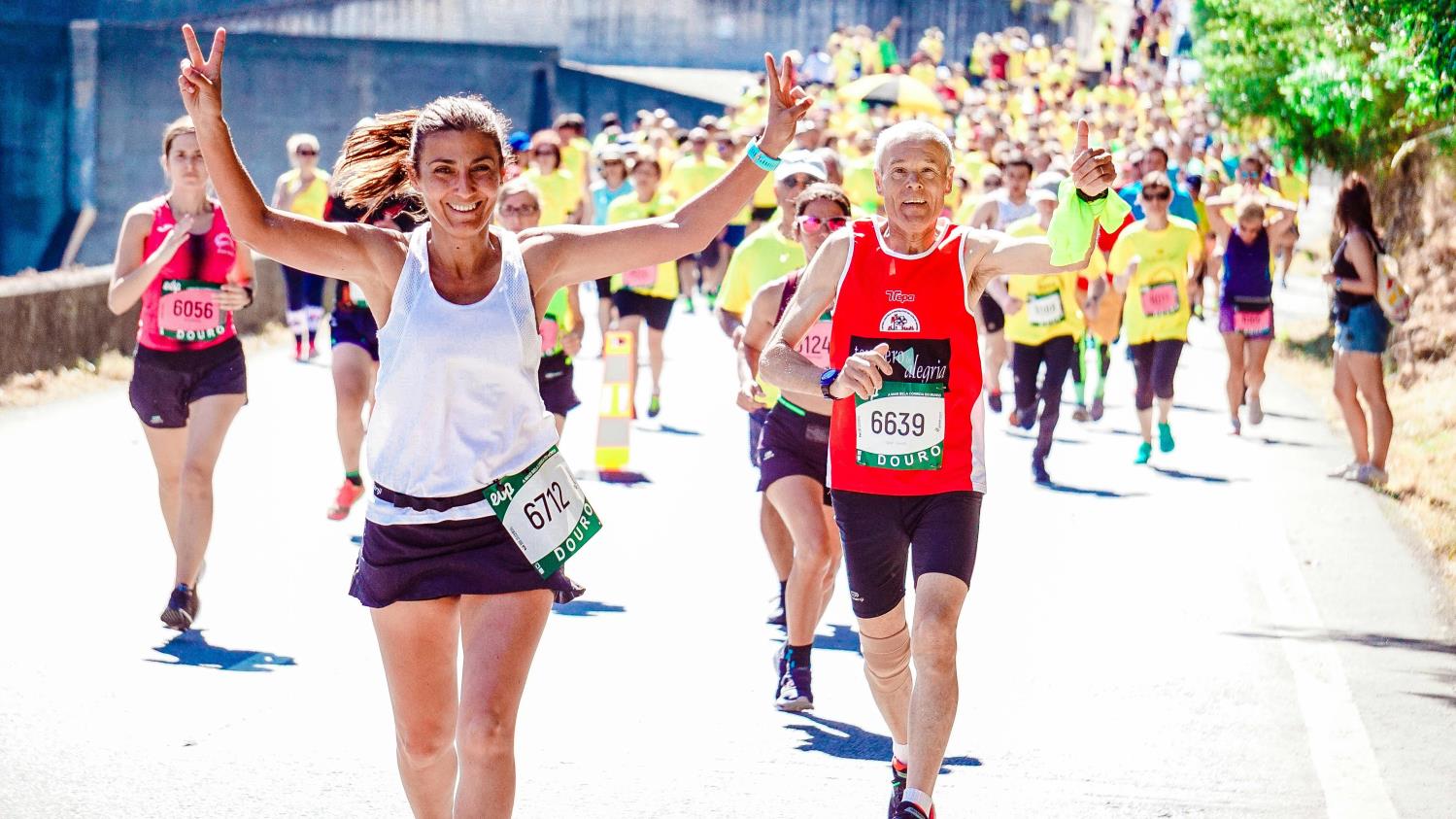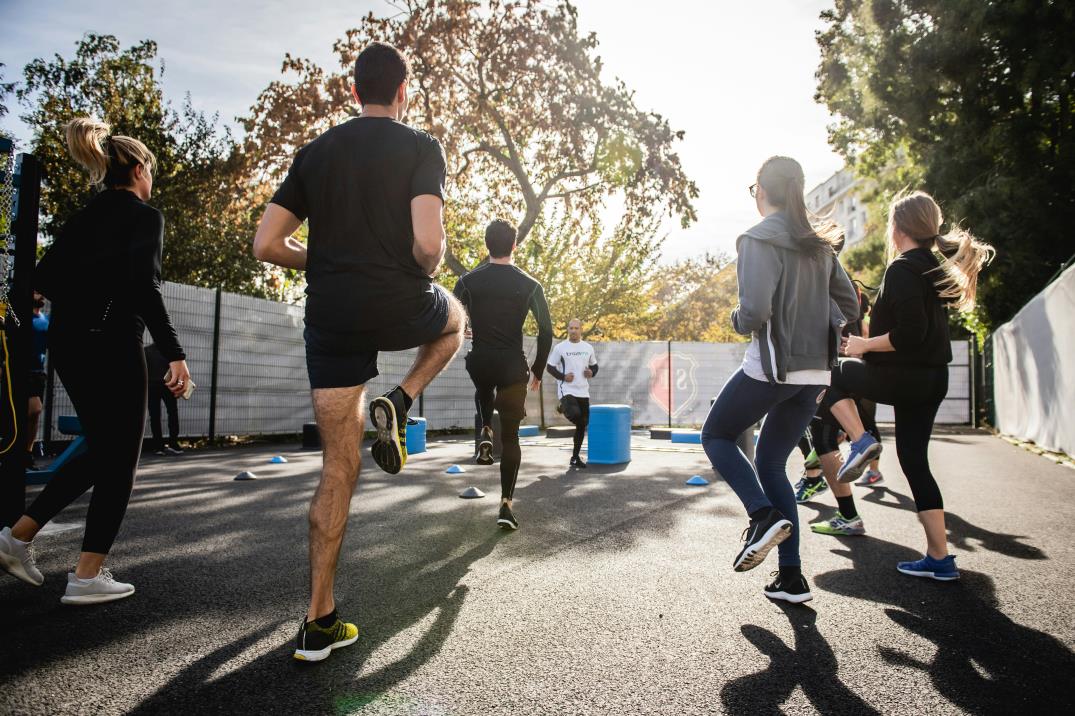Unlock Your Triathlon Potential with Core Strength and Stability
 Karen Parnell
March 05, 2024
Karen Parnell
March 05, 2024
Unlock Your Triathlon Potential with Core Strength and Stability
As a triathlon coach, I've seen time and again the power of a strong and stable core in enhancing performance across swimming, cycling, and running. Let's delve deeper into what the core is, why it's crucial for each discipline, the best exercises to bolster core strength, and how to seamlessly incorporate them into your busy home, work and training schedule.
Understanding your Core
Your core isn't just about sculpted abs; it encompasses muscles deep within your torso, including the abdominals, obliques, lower back, and pelvic floor. These muscles provide a stable base for movement and help transfer power efficiently between your upper and lower body.
Think of your core as a tube encompassing everything from down from your shoulders to your hips.
Why Core Strength Matters to Triathletes
In swimming, a strong core enables streamlined body position and efficient rotation, allowing you to glide through the water with less drag.
On the bike, it provides stability, preventing excess movement and energy loss while maintaining an aerodynamic posture.
And in running, a sturdy core reduces the risk of injury by maintaining proper alignment and supporting the impact of each stride.
I like the saying “you can’t fire a cannon from a canoe” so think of your core as floating on the water and you want it to be as stable as possible to power your through the swim, bike and run.

Photo by mali maeder
Get your FREE Athletes Guide to Strength and Conditioning
Core Strength and the Reduced Risk of Injuries
Let's delve deeper into why cultivating a strong core can significantly reduce the risk of injuries in swimming, cycling, and running:
Swimming
- Improved Body Positioning
A strong core helps you maintain a streamlined body position in the water, reducing drag and enhancing efficiency. When your core muscles are weak, you're more likely to sag in the water, which not only slows you down but can also strain your shoulders and lower back.
- Enhanced Rotation
Efficient rotation is key to a powerful swim stroke. A strong core allows for smoother rotation of the torso, which helps generate more power with each stroke while minimizing stress on the shoulders and spine.
- Stabilization during Breathing
Core stability is essential for maintaining balance and stability while breathing during the swim. A strong core enables you to control your body position and reduce the risk of over-rotation or instability, which can lead to inefficient breathing patterns and increased fatigue.

Photo by Jim De Ramos
Get your FREE Athletes Guide to Strength and Conditioning
Get your FREE Swim Workouts for Triathletes Book
Cycling
- Maintaining Posture
Cycling requires a stable and supported posture to optimize power transfer to the pedals. A strong core helps you maintain proper spinal alignment and stability, reducing the risk of developing poor posture or excessive strain on the lower back during long rides.
- Reduced Risk of Lower Back Pain
Cycling can put significant stress on the lower back, especially during prolonged rides or when riding in an aggressive position. Strengthening the core muscles can provide additional support to the spine, helping to distribute the load more evenly and reducing the likelihood of lower back pain or injury.
- Improved Bike Handling
Core strength contributes to better bike handling skills, especially when navigating tight corners, technical descents, or uneven terrain. A strong core allows you to maintain control of the bike and stabilize your body against external forces, reducing the risk of crashes or falls.

Photo by Pixabay
Get your FREE Athletes Guide to Strength and Conditioning
Get your FREE 31 Indoor Training Workouts and Training Plan
Running
- Maintaining Proper Form
Running with poor posture or alignment can increase the risk of overuse injuries such as shin splints, IT band syndrome, or plantar fasciitis. A strong core helps you maintain a stable and upright posture, allowing for more efficient running mechanics and reducing stress on the joints and soft tissues.
- Absorbing Impact
Every time your foot strikes the ground while running, your body absorbs a significant amount of impact force. A strong core acts as a shock absorber, helping to dissipate this force more effectively and reducing the strain on the lower body joints and muscles.
- Enhanced Balance and Stability
Core stability is crucial for maintaining balance and stability while running on uneven terrain or navigating obstacles. A strong core enables you to react quickly to changes in terrain and maintain control of your movements, reducing the risk of tripping or falling.
A strong core plays a vital role in injury prevention across swimming, cycling, and running by improving body positioning, enhancing stability and balance, reducing stress on the joints and soft tissues, and promoting efficient movement mechanics.
By incorporating core strengthening exercises into your training regime, you can minimize the risk of injuries and maximize your performance potential in all three disciplines of triathlon.

Photo by RUN 4 FFWPU
Get your FREE Athletes Guide to Strength and Conditioning
Get your FREE Guide to Running Technique and Speed
Top Exercises for Core Strength
1. Planks
The ultimate core stabilizer, planks engage multiple muscle groups simultaneously. Start with short intervals and gradually increase duration as you progress.
The video below shows some beneficial plank variations:
2. Thread the Needle
Focusing on rotational mobility and stability, this exercise enhances core strength while stretching the upper back and shoulders. Targeting the obliques, this exercise improves rotational stability crucial for cycling and running.
Watch the video to see how to perform the Thread the Needle exercise:
3. Dead Bugs
A dynamic movement that challenges core stability while promoting coordination between limbs, perfect for enhancing swimming efficiency.
Find out how to do the Dead Bug exercise in the video below:
Get your FREE Athletes Guide to Strength and Conditioning
4. Bird Dog
Strengthening the core and improving balance, this exercise helps maintain stability during dynamic movements common in triathlon disciplines.
Find out how to do the Bird Dog exercise below:
5. Superman
Strengthening the lower back and glutes, this exercise counteracts the forward-leaning posture often seen in endurance athletes.
Watch the video to learn how to do the Superman exercise:
Get your FREE Athletes Guide to Strength and Conditioning
Incorporating Core Work into Your Routine
With jam-packed schedules, finding time for additional workouts can seem daunting. However, integrating core exercises into your daily routine is simpler than you think. Try incorporating a quick core circuit during your warm-up or cooldown, or even during commercial breaks while watching TV.
You could try "Strength Snacking" - read how to do it.

Photo by Gabin Vallet on Unsplash
Get your FREE Athletes Guide to Strength and Conditioning
The ChiliTri 30-Day Core Stability Challenge
To kickstart your journey to a stronger core, I invite you to join our 30-day Core Stability Challenge. Each day, dedicate just a few minutes to a series of core exercises designed to build strength and stability gradually. With minimal time investment and maximum benefits, this challenge is perfect for busy triathletes like you. The challenge is a downloadable sheet with exercise video links.
Conclusion
Consistency is key. By prioritizing core strength and stability, you'll not only improve your triathlon performance but also reduce the risk of injury, allowing you to excel in every leg of the race.
So, let's strengthen that core and unleash your full triathlon potential!
Karen Parnell is a Level 3 British Triathlon and IRONMAN Certified Coach, 8020 Endurance Certified Coach, WOWSA Level 3 open water swimming coach and NASM Personal Trainer and Sports Technology Writer.
Karen is currently studying for an MSc in Sports Performance Coaching at the University of Stirling.
Need a training plan? I have plans on TrainingPeaks and FinalSurge:
I also coach a very small number of athletes one to one for all triathlon and multi-sport distances, open water swimming events and running races, email me for details and availability. Karen.parnell@chilitri.com
Get your FREE Guide to Running Speed and Technique
Get your FREE Swim Workouts for Triathletes E-book
Get your FREE Open Water Swimming Sessions E-Book
Get you FREE 31 Structured Indoor Cycling Sessions and Training Plan
Get your FREE Athletes Guide to Strength and Conditioning
Core Strength and Stability FAQ
1. What exactly is the "core," and why is it so important for triathletes?
The core refers to a group of muscles deep within your torso, including the abdominals, obliques, lower back, and pelvic floor. These muscles provide stability and support for your body during movement and are essential for efficient power transfer between the upper and lower body. Strengthening the core helps improve posture, balance, and overall performance in swimming, cycling, and running.
2. How does having a strong core help prevent injuries in swimming, cycling, and running?
A strong core contributes to better body positioning, stability, and alignment, which can help reduce the risk of overuse injuries and strains in all three disciplines. It allows for smoother movement patterns, better shock absorption, and improved control, ultimately minimizing stress on the joints and soft tissues.
3. What are some signs that my core might be weak, and how can I assess my core strength?
Signs of weak core muscles include poor posture, lower back pain, difficulty maintaining balance, and reduced stability during movement. You can assess your core strength through exercises like planks, bridges, and bird dogs, paying attention to how long you can hold these positions with proper form.
4. How often should I incorporate core exercises into my training routine, and for how long?
Aim to include core exercises in your routine at least 2-3 times per week. Start with shorter sessions (5-10 minutes) and gradually increase both the duration and intensity as your strength improves. It's important to listen to your body and avoid overtraining, as rest and recovery are also crucial for progress.
5. Can I do core exercises on the same day as my swim, bike, or run workouts?
Yes, you can certainly do core exercises on the same day as your other workouts. It's best to do them either as part of your warm-up or cooldown to activate and engage your core muscles before or after your main training session. Just be mindful not to overexert yourself, especially if you have a particularly intense workout planned.
6. Are there any specific core exercises that are best for triathletes?
Yes, there are several core exercises that are particularly beneficial for triathletes, including planks, Russian twists, dead bugs, bird dogs, and thread the needle. These exercises target multiple core muscles simultaneously and help improve stability, balance, and endurance specific to the demands of swimming, cycling, and running.
7. How can I find time to incorporate core exercises into my busy schedule?
It's all about prioritizing and being creative with your time. You can perform quick core circuits during your warm-up, cooldown, or even during commercial breaks while watching TV. Additionally, consider integrating core exercises into your cross-training sessions or doing them as standalone workouts on rest days.
8. What's the ChiliTri 30-day Core Stability Challenge, and how can I participate?
The ChiliTri 30-day Core Stability Challenge is a structured program designed to help you strengthen your core gradually over the course of a month. Each day, you'll perform a series of core exercises tailored to improve strength and stability. To participate, simply commit to dedicating a few minutes each day to completing the prescribed exercises and track your progress along the way. You can download it for FREE here.

